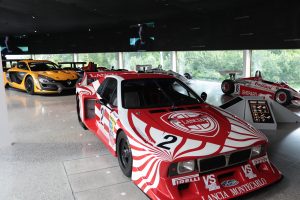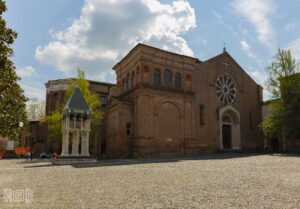The church of Santo Stefano is a very peculiar place, with an unmistakably bolognese style, that will enchant you in every time of the year.
Also known as the Complex of the Seven Churches, the Basilica is a mixture of architectural complexity and variety, all surrounded by the mystery of its legend. These are the elements that make the church an unicum in Bologna.
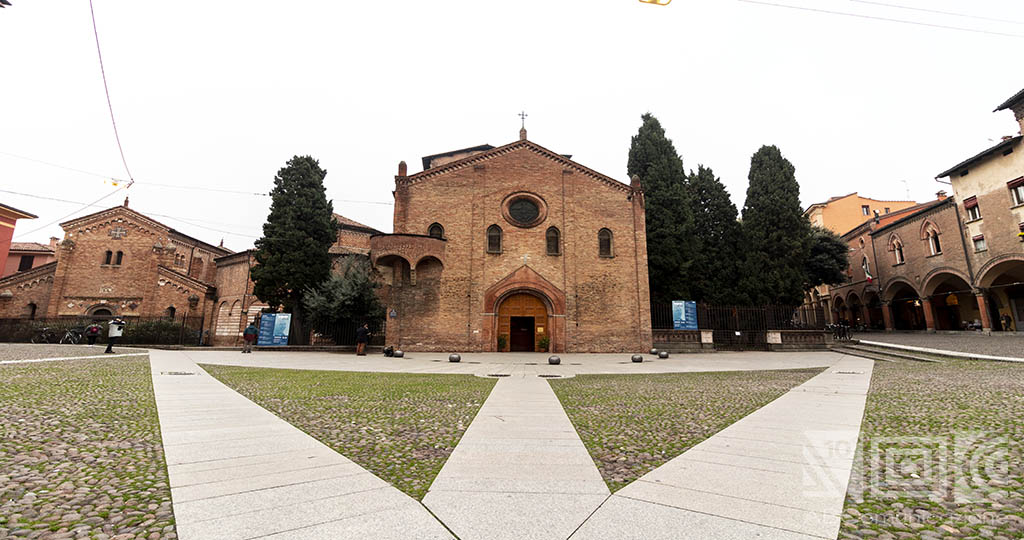
Where is the Basilica of Santo Stefano located?
The Basilica of Santo Stefano is located at the end of Santo Stefano street, at number 24, and it faces the homonymous square. Actually, the toponymy does not consider it as a real square. However, its triangle configuration and the funnel-shape that you can see while walking in Porta Ravegnana street, make people see this part of Santo Stefano street as an actual square.
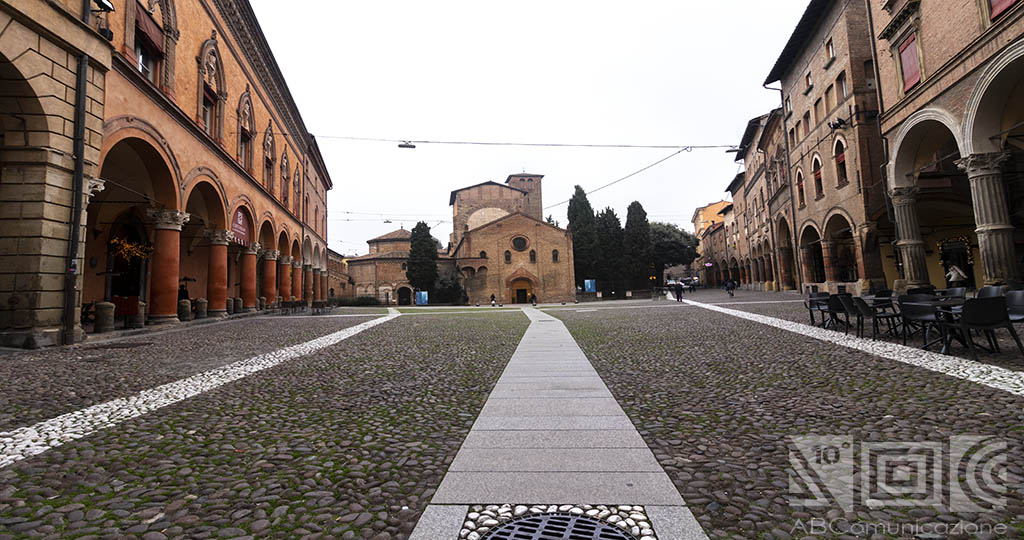
The Square and the Basilica of Santo Stefano are very relaxing and full of spirituality. The surrounding floor is almost fully compounded by sampietrini (cobblestone), on which you can find numerous tables of the dining points. It is basically the ideal place to relax while enjoying a coffee, a nice aperitivo or a good meal of tortellini. Discover more about sfoglia and where to eat it in our article Fresh pasta: the art of bolognese grannies.
How to recognize the Basilica of Santo Stefano?
If you’re coming from Porta Ravegnana street, the Basilica will appear to you in a magnificent scenographic way.
The red bricks of the buildings of the seven churches, together with the dark green of the cypresses of the Basilica, enhance this beautiful frame. Once you get in the square, you can admire a complex that has different fronts, both asymmetric and fragmentary.
It is good to remember that numerous intervention and demolition happened to the Church of Santo Stefano during centuries.
Passing through porticoes and beautiful old buildings, you will find yourself in front of churches and monasteries: in the center you will see the church of San Giovanni Battista (of the Crucifix), the only access to the complex. Over the entrance there is written Sancta Sanctorum and there is a blessing hand. On the right, there is the monastery of Santo Stefano, with a garden and tall cypresses. On the left, you will see the octagonal-based church of the Saint Sepulchre, and next to it the one dedicated to the Saints Vitale and Agricola.
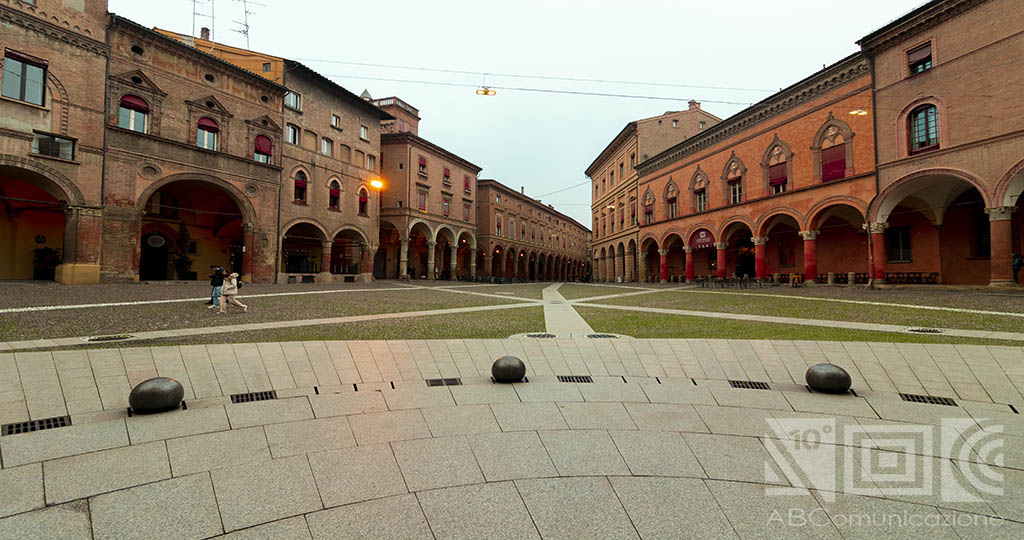
Architectural and artistic curiosities on the surface of Basilica of Santo Stefano
The columns that flank the main entrance are adorned by capitals, in which are depicted animal and human figures.
On the left perimeter of the church of the Crocifisso, you can notice a marble plaque, found in 1299, in honor of the goddess Isis. For the most devoted, on the surface it is possible to recognize a little bird in a brick, try to find it!
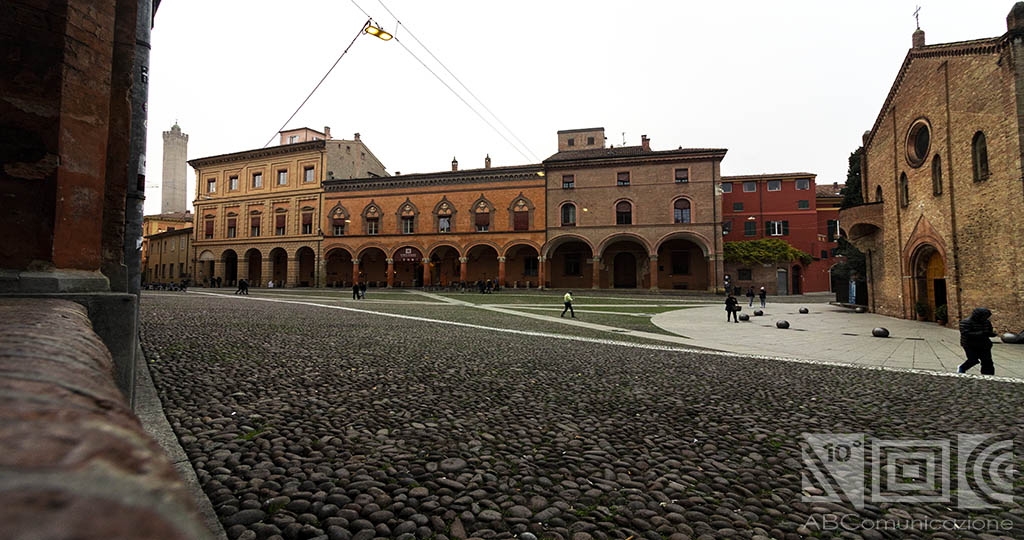
In the courtyrad ahead of the Sepolcro church, next to the cypresses, there are two sarcophaguses from different epochs. One of them is of the Orsi family. It is a marble roman sarcophagus, from the 3rd century A.D. reused as family burial between the second half of the 15th century and the 16th century. A particularity is that on the surface of the church, you can see a brick in black rock also called “the prey of truth”. According to the tradition, whoever reflected on this brick, would be able to see his own flaws and sins.
Why is the Basilica of Santo Stefano also named Seven Churches?
Seven Churches is the name that folk tradition attributes to the church of Santo Stefano. At the end of the 9th century, this complex received the title of Sancta Hjerusalem.
Consequently, this group of churches and monasteries represent one of the most iconic reproductions of the Saint places of Jerusalem. This is also why, among centuries, the complex has always had a significant religious importance, becoming a strong call for all the christians.
The profile of the Seven Churches was a meeting point of the Longobards, and a place for inspiration and study for Dante Alighieri. The church profile as we see it now is the result of a long and articulated story that modified the Basilica.
From the invasion from the Hungarians, and due to the numerous restores that occurred, today we can find only four of the initial “Seven Churches”.
Why the name “Church of Santo Stefano”?
Why at this complex was assigned the name of the protomartyr Stefano, when it is rare to hear references of this saint.
In the church of Santo Stefano in Bologna, are conserved few relics of the Saint, in those are some bones, rocks from the flagellation which, according to the tradition, are steeped by blood of the saint. These relics are kept in the museum of the monaster, and it seems, they have been brought from Jerusalem to Bologna by Petronio.
Moreover, in the church of the Crocifisso, the saint is figured in oil painting, by Pier Francesco Cittadini (17th century); in the courtyard of Pilato we find him in a representation by Giuseppe Maria Crespi; in the museum is kept a copy of the creation by Francesco Raibolini, while the original is located in Galleria Borghese, Rome.
We should also keep in mind that the tradition attributes to the bishop Petronio the foundation of the original plan of the complex. The idea was to rebuild places to pray in honor of the ones in holy land.
The complex would have represented Jerusalem, St Santo Stefano the valley of Giosafat, Saint Giovanni on the Mount would be the Mount olive and Street of Peopli the River Ezechia. And what better denomination, for a sacred place that reminds of the holy land, if not the one from the first martyr of the New Testament like Santo Stefano?
Origins and legends about the Church of Santo Stefano
Another topic connected to the origins of the Complex of Santo Stefano, is a sanctuary in honor of Isis, in pagan times.
As said before, in 1299 it was discovered next the church of Crocifisso, a plaque engraved with a script dedicated to the goddess Isis: Dominae Isidi Victrici Nomine. Many studies followed this case. The majority seems to agree on the fact that around the area of the church of Santo Stefano, there was a sanctuary dedicated to Isis.
For what concerns the existence of some architectural elements found in the same area like the columns in karystos-stone around the area of the Sepolcro, and the exact location of the sanctuary, the discussion is not concluded yet.
Various are the hypothesis: for example that this temple was located where the complex of the seven churches was born; another one states that it was located near a building, and the distance from the two would willingly help the rescue of some materials, after the pagan temple was destroyed. The last hypothesis seems to be the most claimed one.
Tradition and Foundation of the Complex of the Seven Churches
There are two certain dates that report the presence of the complex: 887 A.D and 983 A.D. The first one is connected to a document in which the first time it is spoken about the Sactum Stephanum qui vocatur Sancta Hierusalem. This paper is also about the goods that the bishop of Parma Viboldo and the monk Vulgunda had bought from various bishops like the Bologna one as well. Among these goods the complex of Santo Stefano was mentioned.
The 983 A.D is the date of the oldest written attestation about the existence of the monastery. Therefore, it is possible to state that the Complex of the Seven Churches was founded before 887 A.D.
This date and the paper are in accordance with the tradition that put the foundation of Santo Stefano by Petronio, bishops of Bologna from 431 to 450 A.D.
The corps of Saint Petronio was found in Santo Stefano around the 12th century. Today the remains of the corps are kept in the Basilica in his honor. This is not a strange episode: even if the complete story of the Complex was crossed by legends, it was normal that the founder of a religious building was buried there as well.
Moreover, it seems that around the 5th century, the future bishop Petronio organized a pilgrimage to Jerusalem. On this occasion, he also brought with himself various relics, enriching the Basilica founded by him and dedicating it to the protomartyrs. In this way Petronio sealed the passage of the bolognese community from the old cults, attaching his name deeply to the city.
The tour of the Seven Churches
If you want to dig yourself in the beauty of this complex, between courtyards and monasteries, then follow us and keep discovering many other curiosities!
Chiesa del Crocifisso
The church of the Crocifisso represents the only entrance to access the complex. Time ago it was dedicated to Giovanni Battista and to Maddalena.
This church has only one aisle , with a roof with trusses and an elevated presbytery. At the end of the building, it is possible to access the crypt, just by following the stairs. This crypt, from the 11th century, contains parts of the corpses of the Saints Vitale and Agricola.
This church was founded in the VIII century from Ildebrando and Liutprando, king of the Lombards. For this reasion, this building kept for a long time the typical Lombard style. Due to many restorations, starting from the nineteenth century, it is now complicated to read and interpret the space.
Among the various artistic works, we remind that on the right side of the Church of Crocifisso is possible to see a oil painting by Pier Francesco Cittadini, in which is figured the stoning of the deacon Stefano. Another important painting is the Mercy in polychrome papier-mache by Angelo Gabriello Piò.
On the other side, there is the Miracle of S. Mauro Abate, by Teresa Muratori of the 16th century. If you want to know more about the women who made the history of Bologna, read our article!
The Crypt
Crossing all the way down the church of the Crocifisso, and following some steps, you will find the Crypt. Its access, until the seventeenth century, was from the courtyard of Pilato. This is representative of the typical Bolognese medieval building as an oratory.
For what concerns the architecture, the crypt has five small aisles, compounded by recovered columns. It keeps the remains of the corpses of the Saints Vitale and Agricola. The columns of the aisle are fourteen, and are built in marble. Among these you will find a big variety of materials and different styles of capitals, like some frank and other in renaissance inspiration.
Two columns are distinguished from the others. One is made in bricks and the other one in marble, and both of them are located on the entrance to the crypt. According to the story, the marble column is directly from Jerusalem, and was brought to Bologna by the bishop Petronio. This column would represent the height of Christ: it is 54 ounces high.
According to a later symbolism, the church should represent the cenacle, where Jesus had dinner for his last time with his apostles.
For more details and curiosities about the crypt of Santo Stefano and the other crypts of the city, go read our article : Underground Bologna: a Journey into the four Crypts.
The church of Santo Sepolcro (or holy sepulcher)
On the left side of the church of Crocifisso, crossing a door and going up some steps, you will enter one of the most iconic places of the complex: the church of Santo Sepolcro. This church was originally in honor of Santo Stefano.
A very soft light illuminates the space, full of sacrality and mystery given by the tomb of Christ.
From this church it is possible to start all the history on the inside of the Complex of Seven Churches: from the pagan origin, with Isis’s temple, to the christian story with the temple conversion in a space for baptismal occasion.
The element of the water put together both the cults, and it seems that has encouraged the bishop Petronio to build a sacral implant, similar to what he saw on his trip to Jerusalem. Infact, in the holy land the church of Santo Sepolcro was built in a place where it took place the crucifixion, the anointing, the burial and resurrection of Jesus.
The inside structure of this church is a dodecagon while the external one is an octagonal. The number eight reminds of the Resurrection, and twelve represents the number of the apostles and the tribes of Israel. Therefore, twelve are the columns that surround the Sepolcro, twelve are the mullioned windows that delimit and twelve are the parts that make up the dome.
Shrine of Santo Sepolcro
According to the story and the tradition, the shrine that rises at the center of the Church of Santo Sepolcro represents Mount Calvario. This shrine represents the place of the burial of Christs; the marble angel on its center indicates the Resurrection.
The Basilica of Santo Stefano was enriched with relics and treasures also due to the crusaders that were coming back from the Holy Land. Their return stimulated important architectural reconstructions.
What the crusaders saw was the establishment of Costantino Monomaco built between the 1036 and the 1048, which became an inspiration for the construction of the shrine.
The architectural components of the shrine, as the entrance stair, the balustrade and the altar, were put in the church at the end of the 19th century. Among the various present elements in this space, if you look towards the right, you can see a black marble column. This column is representative of a significant moment of the Passion of Christ: is the “column of the flagellum”.
Church of Saints Vitale and Agricola
From the church of Santo Sepolcro, on the left side, is possible to access the church of Saints Vitale and Agricola.
These two protomarties are represented by a bas relief on the surface of the building, of what there’s also a copy conserved in the Museum of Santo Stefano.
A little bit of history
This church had a main importance in the history of the complex. Despite multiple destructions and reconstructions during the centuries, the Church of Saint Vitale and Agricola was able to maintain its own manly roman-lombard characteristics. As a proof of this fact, we can take a look at the capitals, the mosaics and fragments of frescoes that can be seen all around this church.
This church is the most simple one compared to the others. It has three aisles and the columns are characterized by capitals in ionic style. On the sides of this sacred place, there are two sarcophagi of the Saints Vitale and Agricola, dating from the 9th-11th century. On top of them, there are figures of symbolic animals like deers, lions and peacocks.
The cult of the Saints
The cult of the two Saints Vitale and Agricola, a servant and his master who died for their faith in Christ, is connected to the archbishop Ambrogio from Milan. In fact this one, in one of his visits in Bologna, in 393, witnessed the discovery of the bodies of the two Bolognese protomartyrs.
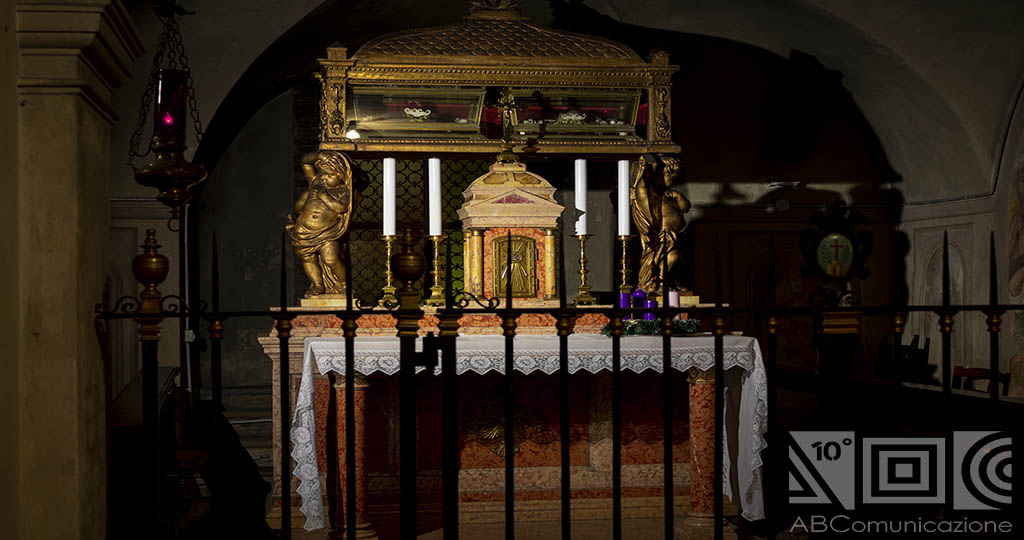
The remains of the Saints,in their sarcophagus, were immediately exposed for public veneration and, most likely, it was Petronio who promoted and spread the veneration.
Not for nothing,in the sarcophagus of Agricola are sculpted three figures, of which the center one is recognizable in Saint Ambrogio. Then on the sides is possible to see Saint Ambrogio holding in his hands the palm of the protomartyr, and Sain Tecla martyr venerated by Saint Ambrogio.
A belief connected in the history of the seven churches is that the metal cross, stuck on the wall, is the one of Agricola’s crucifixion.
Moreover,from the third step of the major aisle is possible to see the measures of Jesus and Madonna’s feet, as well as the length of the wounds on Jesus’ cost.
You want to discover other legends about the city? Read our article about the Seven secrets of Bologna!
Pilato’s courtyard
The courtyard of Pilato represents the central fulcrum around which all the other buildings of the complex of the Seven Churches are organized.
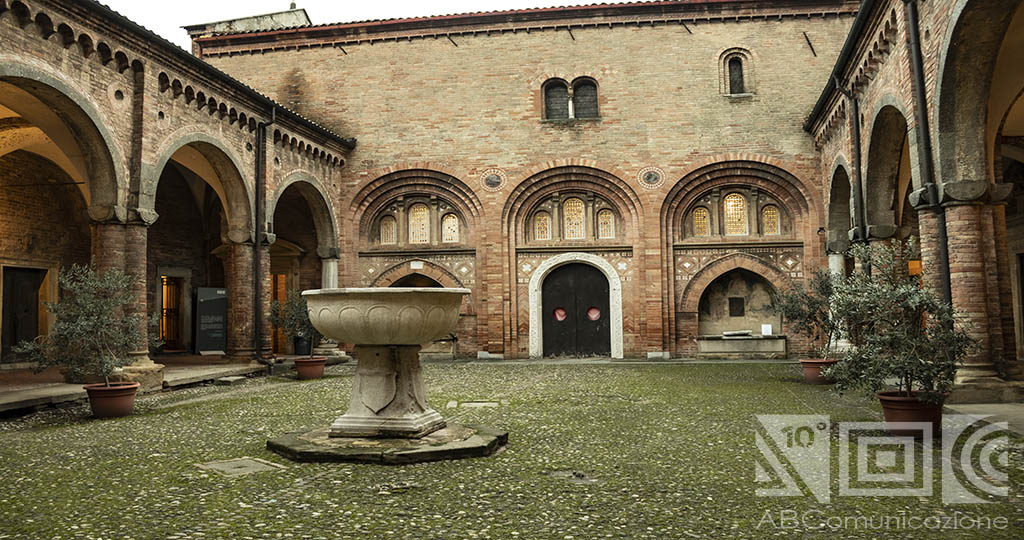
You can have access to the courtyard crossing the Church of Santo Sepolcro. The name of the courtyard reminds the “lithostrote”, which is a flooring where Pilato processed Jesus. The pilasters that characterize the courtyard have a cruciform plant and have cubic capitals of lombard style. While the flagstone is a cobblestone and reminiscent of the bolognese style of the first half of the 18th century.
Chapels and funeral tombstones
Various are the chapels and funeral tombstones present in which, a very one in particular, has engraved a pair of scissors. Probably it is a tomb of a tailor of which we only have a symbol of what his job was, but no name is written. On the sides of the courtyard there are multiple chapels like the Chapel of Saint Giustina or the Chapel of Giacomo Francia.
The statue of a rooster and mosaic decorations
Another curiosity that you will be able to see, is , on the right side of the courtyard, the statue of a rooster. This is a reference to the episode of the Passion in which is linked to Pietro’s denial, after a rooster crowed.
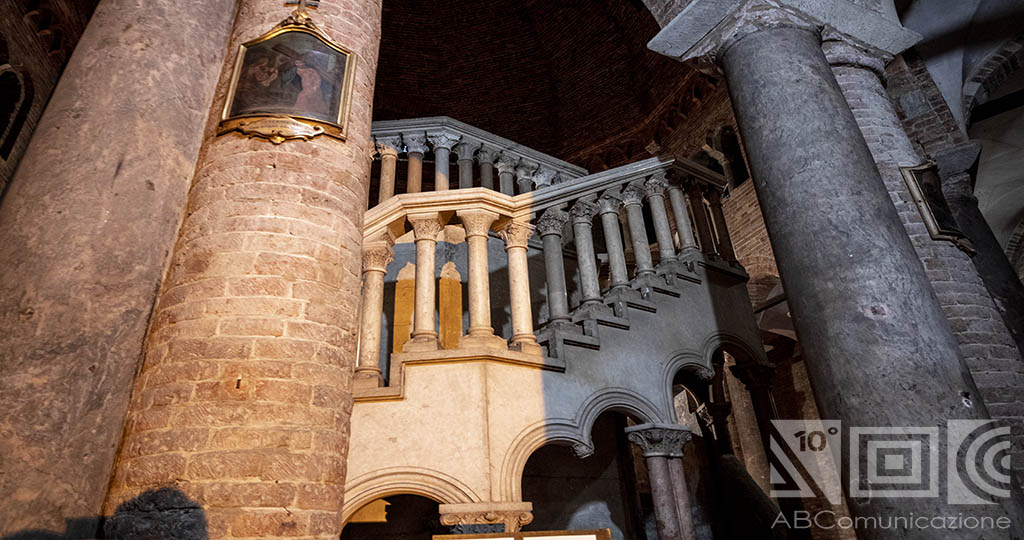
This courtyard is very elegant, and is embellished with very beautiful mosaic decorations in brick. Characterized by many colors and some marble shards, these decorations make this place unique and charming.
Among the various geometrical represented figures,there are some stars as well, of six, seven and eight tips. It is possible to read a reference to the liturgical symbology: the six as representative of imperfection,the seven as completeness and the eight as the resurrection.
The Lombard occupation of Bologna
The basin of Pilato, located in the center of the courtyard, states the Lombard occupation of Bologna in the VIII century. In fact, in the script on the basin, which also brought discussions between the experts, it is possible to read references to the two lombard kings Liutprando and Ilprando. This basin is made of marble stone, fixed on a pedestal. It is located exactly on the “lithostrotos” the place where Jesus was sentenced. It represent the moment where Pilato washed his hands to avoid sentencing Jesus himself.
The denomination “Basin of Pilato”has to date from the 16th century, when the complex began to be symboliccaly connected to the Passion of Christ.
Church of Trinity (or the cross)
The church of Trinity is described as one of the most important churches of the complex of Santo Stefano. Sadly, today the structure of this church appears to the visitors in an ambiguous and complicated way.
This church went through many phases of destruction and then reconstruction; most likely, in origin it was a place to pray very different as it appears today.
It was defintely wider compared to what we see today, and it is also possible to hypothesize that this was the most ancient area of the complex.
Although there are not any visible marks, the experts hypothesize that this church existed already in the paleochristian age.
The church of Trinity is characterized by an irregular plan, and it is compounded by six chapels, all of the different in measurement and shape.
The cloister of the Monastery of Santo Stefano
This cloister is not included in the representative place of the Passion of Christ.
But, it is in this place, which is on the right side of the church of Trinity,that encloses and consumes the monastic life of the Olivetan Benedictines.
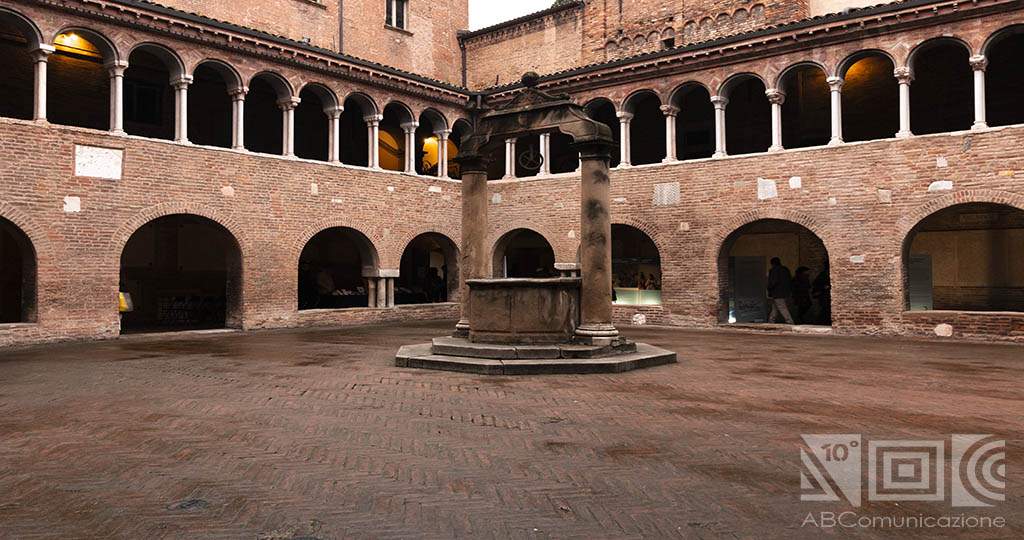
The cloister is characterized by a double order of loggias, the first of the XI century,and the second one dating from the 12-13th century. This second order of loggias is compounded by white coupled columns, which makes the building very harmonious and elegant.
In this cloister, as well as in the courtyard of Pilato, the bichrome of the decoration on the wall and above the capitals, give an unique elegance and vitality.
On the left side, in a niche protected by a grating, you can see anonymous frescoes from the 14th century, in which are the Madonna col Bambino (madonna with the children) and San Pietro, Giovanni Battista, and San Francesco. In the superior side of this arcosolium there is located another portion of the frescoes of the Saints Giacomo Intersciso, Vitale and Agricola. Lastly, at the center of the cloister there is a sandstone well from the seventeenth century.
About Dante and the Complex of the Seven Churches
History tells us that Dante himself, when passing by Bologna, was very magnified by it. The reason is probably due to these columns having the capitals with anthropomorphic forms, some of them very close to some parts of Dante’s operas.
In particular, we can make reference at the tenth canto from the Purgatory (vv. 130-132), in which Dante describes the similitude of the proud and the damned who walk recurve, under heavy boulders. This seems to remind the grotesque figures visible in the capitals of the cloister. In another capital, in which the pain of fortune tellers is represented,there is the reference to the twentieth canto of Inferno (vv.13-15).
The Museum of Santo Stefano
To conclude this tour of the Complex of the Seven Churches, it is important to remind you of the little but precious museum of Santo Stefano. On its inside are conserved rare objects, and it is possible to access it from the left side of the cloister.
For all the information and curiosities, read our article about Museums in Bologna that cannot be missed!
Bibliography
- Borghi, B., In viaggio verso la Terra Santa: la basilica di Santo Stefano in Bologna, Bologna, Minerva, 2010.
- Montorsi, W., La Gerusalemme e l’Abbazia, in Santo Stefano in Bologna: bizantini, longobardi e benedettini, Modena, Aedes Muratoniana, 1980.
- Scannavini, S. (a cura di), La Piazza Santo Stefano. Da trebbo medievale a piazza prospettica rinascimentale, Bologna, Grafis Edizioni, 1991.



